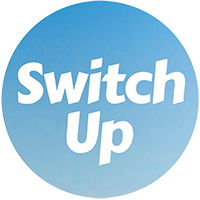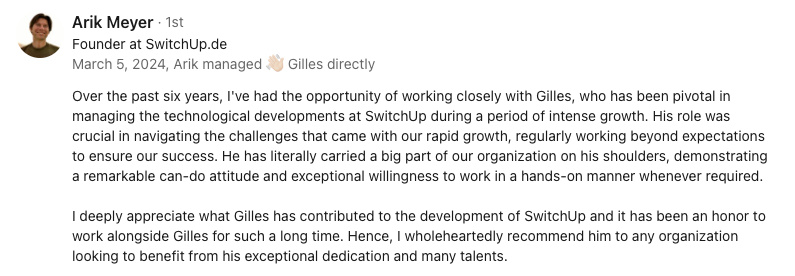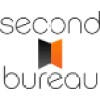Micro-case studies make tech wins easy to share
Abstract:
The article advocates for the use of micro-case studies as an efficient and minimalist approach for tech professionals to share their work and achievements without the overwhelm of lengthy reports or perfectionist tendencies. It explains that micro-case studies are concise, focused narratives—often a single page or less—centered on a specific win or insight, making it easy to communicate value quickly across multiple platforms like LinkedIn, Twitter, or newsletters. The article outlines a practical, one-hour workflow that includes selecting a recent win, drafting a brief story using familiar templates like STAR or PAR, repurposing content for different channels, and using simple visuals made with tools such as Canva or Notion. Unique elements include a real-world example of a tech consultant automating client onboarding to save time, and personal reflections from leadership roles in various countries illustrating how consistent, small updates build more trust than infrequent major announcements. The piece emphasizes the benefits of “satisficing” over perfection, minimalist tracking of engagement, and the role of regular, bite-sized content in building visibility and credibility—ultimately positioning micro-case studies as a sustainable habit that keeps storytelling simple, effective, and stress-free for busy tech minimalists.
Keeping things simple in tech, ah, it is not always easy—especially when I want to share my work. Reports get long, edits never end, and those confusing templates can turn what should be a quick update into a week’s work. But, vraiment, it does not have to be like this. I have found a way to show my wins and insights in less than an hour, without drowning in details or endless tweaking.
I’ll show why micro-case studies work for tech minimalists like me, how I build them quickly, and how I share them everywhere with little fuss. From checklists to simple templates and digital tools, every step is about making a habit out of sharing small wins, minus the headache. I learned this the hard way, after years of chasing perfection and losing too many evenings to endless edits.
If, like me, you have put off documenting success because it felt heavy or time-consuming, I hope you find here some ways to keep things brief, useful, and easy to repeat. Here’s how micro-case studies help me keep things light, fast, and clear.
Micro-case studies for tech minimalists
What makes a micro-case study different
Micro-case studies are short, clear stories about one specific project win or tech insight. Regular case studies can run long and deep, but micro-case studies stick to one clear lesson or result, usually wrapping up in a page or less. That single focus helps to keep the things simple.
- Micro-case studies turn complex work into an easy story.
- Regular case studies often need lots of detail and long analysis.
Clear and brief, these stories save time and let my skills show without the usual overload of paperwork.
Why I prefer micro-case studies
Micro-case studies just make sense for me, especially when I want to avoid long documentation. The goal is clear: I share useful results with only what matters. This helps me show what I’ve done while keeping things fast and tidy. They’re also easy to use for different digital spaces. Instead of a long report, I can tell a simple story about fixing a nasty bug or making a smoother process—just the details people need, never too much.
When I managed a multicultural team in Beijing, I started using micro-case studies to highlight our team wins. With so many languages and backgrounds, long reports were lost in translation. But a short story about how we fixed a production bug or improved onboarding? Everyone understood, and it made our weekly meetings much more lively (and less painful, too).
Versatility and maintenance benefits
Because they’re short, micro-case studies can fit lots of places: on social media or in a newsletter. They don’t need many updates and don’t go out of date fast, which makes life easier.
Some ways I use them:
- Share as a LinkedIn post or Twitter thread
- Add a quick story to a newsletter
That flexibility keeps my work visible, no matter how busy I get. But how do I make one fast, without getting stuck perfecting it forever?
Why one hour is all I need
The power of time-boxing
Limiting myself to one hour for a micro-case study helps me beat two big issues: not enough time and getting lost in the details. Keeping a strict time budget cuts down on putting things off and makes it easier to finish. I can focus and do the job without stressing over getting everything perfect. It’s a healthier way to think about quality, aussi.
Satisficing over perfection
A one-hour time limit encourages me to stop at “good enough” instead of chasing perfect. Research (and my own experience) suggests this approach helps me finish more often, feel less stressed, and keeps the work consistent. Letting perfection go can actually lead to better work and avoids that creative burnout feeling.
Building a repeatable habit
Spending a fixed amount of time helps make this a habit, not a huge project. Regular sharing builds my brand and keeps the process feeling light. With a simple hour-long routine, posting becomes something I can do anytime, without losing focus or peace. When I co-founded a cross-border e-commerce platform in Shanghai, using a strict one-hour workflow helped us launch marketing campaigns faster and measure results more effectively. We saw a 30% increase in campaign output in just two months, simply by sticking to this routine.
Here’s what that routine might look like for me.
The one-hour workflow for micro-case studies
Pick and outline my story
I give myself 10 minutes to pick a recent, clear win or insight—skip huge projects and pick something easy. A simple checklist helps:
- Is it recent and easy to remember?
- Does it show a clear challenge and result?
- Can I sum it up in a sentence or two?
Now, I just write the basics: What was the challenge? What did I do about it? What happened? I use this fill-in-the-gap style:
“Faced with [challenge], I/we [action taken], which led to [result].”
These shortcuts take away decision overload and help me get started fast.
Draft my core narrative
I spend about 15 minutes writing the main story. I like a simple flow: Problem → Action → Result → Reflection.
- Problem: What made things difficult?
- Action: What did I do?
- Result: What changed?
- Reflection: What did I learn?
I try not to get trapped re-editing forever—speed helps. I shoot for around 150 words, clear and simple. Having a structure keeps the story focused. Sometimes, I draft in 12 minutes and move forward, knowing that quicker is often better here.
Set a timer and move on once I hit the main points. Stopping when it’s “good enough” helps me finish more and stress less. Next, I get my story ready for different platforms.
Repurpose for different platforms
I give myself the next 20 minutes to reuse my story everywhere. I start by writing two or three social posts and a short email intro. Each one focuses on something specific:
1. The challenge (“How a small bug slowed us down…”)
2. The fix (“A quick hack that solved it…”)
3. A surprising result (“Unexpectedly, this made our process 30% faster…”)
I use tools or prompts to build these fast. Repurposing lets me reach farther with less work.
Then, I get my story ready for another platform. Maybe a LinkedIn carousel, a Twitter thread, or a short newsletter blurb. I change the tone for each place—LinkedIn more serious, Twitter more fun. Sometimes I add a simple visual, if I want.
I use basic templates in Canva or Notion for a quick graphic or screenshot. I don’t spend more than five minutes here. This step helps to grab attention.
Review and schedule
I take the last 15 minutes for a quick final check. I look for typos and clarity—don’t overthink. I use a basic calendar or Buffer to schedule. A short checklist keeps me on track:
- Story is clear and typo-free
- Each platform has snippets
- Visuals are attached if needed
Planning ahead keeps things smooth and the process feeling light.
This simple checklist helps me avoid endless fine-tuning. For example:
- All platforms covered?
- Visual added?
- Content scheduled?
Done editing? I jot a note to peek at story engagement after a week, either through built-in analytics or a quick spreadsheet. This feedback loop helps me do even better next time, all without adding work. Here are some tools that make it all even faster.
Simple tools for quick stories
Templates for fast drafting
Templates make starting much easier and save brain power. Common ones like STAR (Situation, Task, Action, Result) and PAR (Problem, Action, Result) help me slot in facts and finish my story fast. I also like SCR (Situation, Complication, Resolution) to keep things sharp. With these templates, no need to fear a blank page.
I remember at my IT services company in Paris and Beijing, we used a simple PAR template for every client update. It saved us hours each week and made it easy for everyone—French, Chinese, or English speakers—to follow along.
Visual templates are there too—even if design isn’t my strong point. Tools like Canva and Notion offer simple, ready-to-use layouts. I can make a before-and-after graphic, or sum up my study in one slide. Visuals like these help my micro-case stand out.
Checklists and templates for my workflow keep things moving. A quick list makes sure nothing’s missed, and workflow templates in Notion or Google Docs help organize. This helps to avoid going off track or making things too complex.
Checklists and digital workflow aids
A checklist for every 10 minutes keeps me focused and away from distractions. A sample list:
1. Pick a story
2. Fill the template (STAR, PAR, or SCR)
3. Draft a short version
4. Make social snippets
5. Add a visual
6. Review and schedule
Breaking things into steps helps everything feel manageable and stops perfectionism from taking over.
Some tools keep this simple. Notion and Google Docs are good for writing and organizing these stories. Buffer helps schedule posts on many platforms. These apps are easy, clean, and fit solo professionals or small teams.
Here’s how this toolkit helps me share my ideas fast.
Real-world example: automation win in Berlin
Turning an automation win into content
Let me break down each step. When I worked at a Berlin scale-up, I automated our client onboarding, removing manual steps and saving hours per week. This small, clear win made a perfect micro-case—easy to tell, with a nice before and after.
Capturing the essentials fast
I drafted the story quickly, using a simple approach. In ten minutes, only the key things went down:
- The challenge: onboarding took too long and needed a lot of manual work
- The fix: simple scripts now handle the boring stuff
- The result: onboarding is much quicker, clients are happier
Writing these out quick helps me move to the next step.
Drafting and adapting for multiple channels
Next, I get versions for different channels. Maybe a 150-word PAR draft, then snippets like:
- “Automated onboarding saved hours a week. Sometimes, simple solutions win.”
- “Lesson: tiny scripts can have a big effect on client happiness.”
Different takes keep things lively everywhere I share.
Tailoring for platform and adding visuals
Now, I review and set my plan. The story goes to LinkedIn as a carousel, on Twitter as a thread, each matching the style of the place. A simple before-and-after graphic is quick to make in Canva. This way, a single story travels far, with no extra work.
Finishing and building a repeatable habit
I get it all reviewed and scheduled inside the hour. By making things simple and fast, even little wins become ongoing content across lots of platforms. But what about getting stuck on perfection or losing steam over time? Here’s what helps me.
Mindset shifts for sustainable storytelling
Why good enough wins
Perfectionism, ah, it is my old enemy. When I was transitioning careers, I spent too many late nights tweaking stories, chasing the perfect version. My work-life balance suffered, and my mental health, too. Studies show that aiming for perfect can make you delay starting, or not finish at all. Satisficing—letting “good enough” be enough—brings more happiness and keeps the ideas flowing. It also makes everything lighter. Improving as I go, rather than chasing that first perfect version, makes each story a bit better, with much less stress.
This idea takes cues from Lean Startup thinking—share early, learn as I go. Instead of waiting for a flawless story, I share the early draft and patch it over time. This feels easier on my mind and leads to better results. Consistency is what gets me noticed, not having a single perfect story.
Consistency over volume
Regular posting—even if it’s just small stories—builds trust and keeps people paying attention way more than bursts of heavy posting and then silence. People remember brands that show up, not those that disappear for ages. Keeping things minimal and simple makes this kind of steady sharing possible, even with not much free time.
A one-hour routine means it’s actually possible to keep showing up. In different leadership roles in several countries, I saw that small, regular updates won more trust than waiting for big, rare news. A steady rhythm leads to bigger results.
Next steps for sustainable micro-case studies
Easy ways to iterate on my stories
Tracking engagement should be as easy as making my stories. I plan a monthly look-back on recent stories. I check basic stats—what gets the most interest or replies. Then, I update headlines or swap a stat instead of rewriting the whole thing. These small, targeted changes keep stories useful, with very little effort.
Small tweaks matter. Updating keywords, adding a short client quote, or fixing a headline can boost response and keep things fresh. No need for a total rewrite—just tune what needs attention.
Minimalist methods for tracking engagement
Minimalist tracking is about focusing on a few signals—post views, replies, clicks in a newsletter—and nothing more. I used to track only replies and clicks in our Berlin team’s weekly updates—no fancy dashboards needed. This way, I save time without losing sight of what works.
If a template or story type works well, I repeat it next time. If something flops, I try switching the angle or structure. Letting simple feedback guide me keeps my workload—and my mind—light.
Simplicity works, vraiment. Micro-case studies make it easier for me to show off real achievements and share valuable ideas without getting buried in drafts or fussing forever. I focus on short, clear stories, lean on templates and lists, and I can present my work in an hour, with no stress and no need for perfect polish. The best part: regular, bite-sized stories help build trust, make me more visible, and keep me in touch with my audience. With easy tools and light tracking, improving comes naturally, never adding stress. This method makes sharing work a regular habit, not a burden. So, what small win will I share next? Maybe I will finally tell the story of the time my script broke production at 2 a.m.—but, eh, that is for another day!














